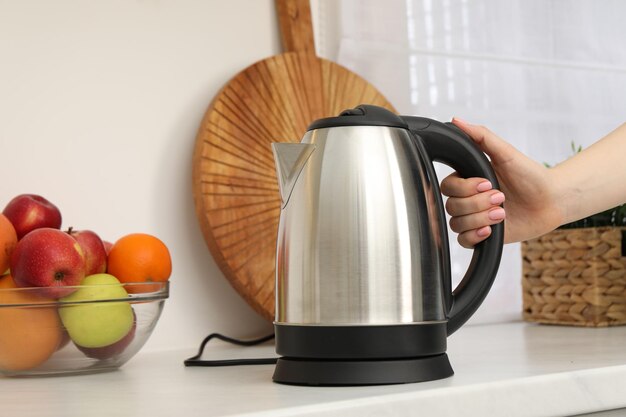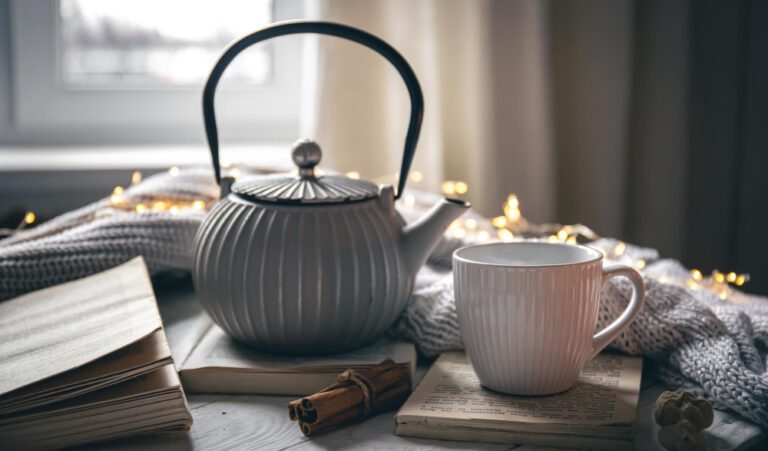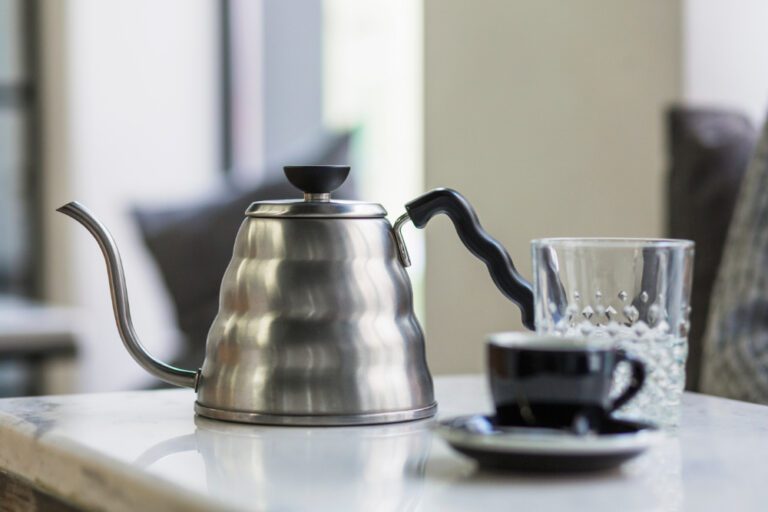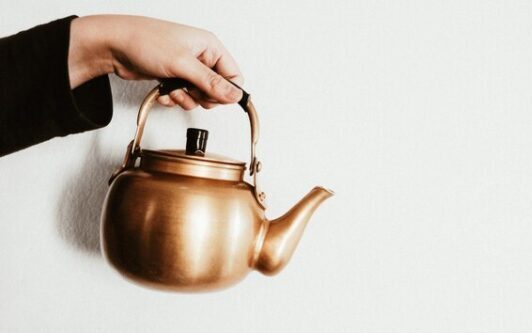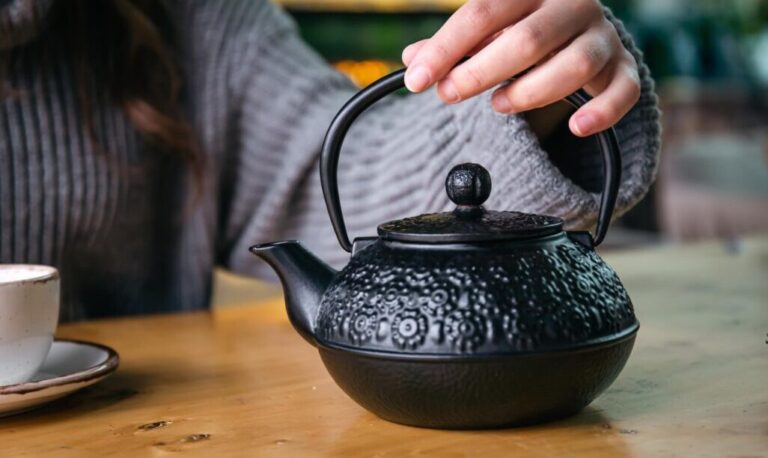Can You Heat Milk In An Electric Kettle? A Simple Yet Effective Guide
Heating milk is a regular procedure in the kitchen, and one often asks a contractor if it can be warmed using an electric kettle. While Electric kettles are generally used for boiling water, many consumers are interested in their multi-functions.
Indeed, electric kettles are fast, efficient, and convenient, so many people use them for transportation. Here, we will explore whether it is safe to heat milk in an electric kettle.
Want to find the best electric kettle for your kitchen? Check out our Best Electric Kettles guide to discover top picks that meet your needs!
Table of Contents
Can You Heat Milk in an Electric Kettle? What You Should Consider First:
Yes, it is possible to heat milk in an electric kettle, but it should only be done in some of the models out there. Here’s why:
Why Electric Kettles Aren’t Designed for Heating Milk:
Electric kettles are designed to heat water and are engineered to do the job in the shortest time possible. Water boils accurately with an equivalent value of one hundred degrees Celsius or two hundred and twelve degrees Fahrenheit; the kettle has a thermostat that alters the procedure as soon as the boiling point reaches one hundred degrees Celsius.
In turn, milk does not boil in the same way that one would boil something on the stovetop. Because it contains lactose, casein, whey, and fats, it will react differently when subjected to heat. When heated, milk’s sugars change and begin to brown or burn, while its proteins coagulate and remain sticky.
These reactions are quite far from the activity exhibited by water and can be termed rather unusual behavior. That is why kettles do not respond well when used to heat milk.
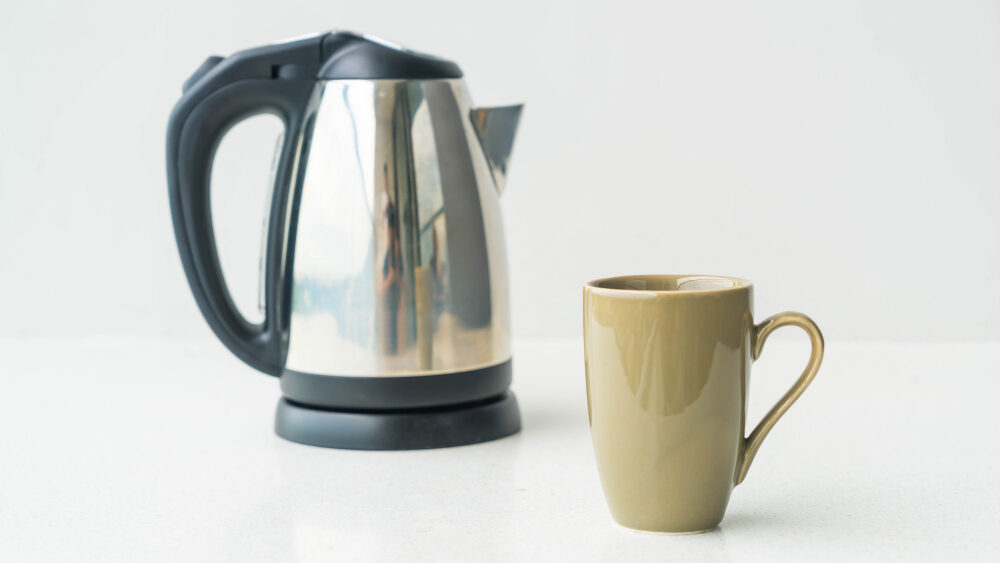
What Happens If You Heat Milk in an Electric Kettle?
If you accidentally or purposefully heat milk in your electric kettle, here are the most likely outcomes:
- Stubborn Residue:
Most of the fats and proteins in the milk will settle on the kettle’s bottom, especially the heating part. This residue may be difficult to wash out, and it even produces a burnt smell.
- Overflowing:
When milk is hot, it rises or boils and if left alone, it overflows which is an issue. Milk foam has the peculiarities of rising rapidly, and if the process is not stopped in time the foam will spill over from the spout or the lid.
- Potential Short-Circuiting:
If there is excess squirting, which tends to enter the electric parts of the kettle, it can short-circuit and cause the entire kettle to become unusable.
- Damaged Heating Element:
Sugar in the milk causes caramelization and may stick to the heater, causing poor heat transfer in the future.
Alternatives for Heating Milk Safely: From Stovetop to Microwave
Instead of using your electric kettle to heat milk, there are better, safer methods you can use:
1: Stovetop Method
The stovetop method is the most traditional and reliable way to heat milk:
Use a small saucepan: Put the milk in another pot, then put it on low heat until it is warm; keep stirring it so it doesn’t burn or form skin on the top.
Monitor the temperature: Milk does not require boiling and can just reach about 70- 80°C, depending on what is required, say, in coffee or hot chocolate.
2: Microwave
If you’re looking for convenience:
Choose a microwave-safe container: Warm the milk in a jug suitable for use in the microwave or a bowl.
Short intervals: Warm the milk on low heat for 15-30 seconds, with a break in between to stir it to prevent it from boiling over.
3: Milk Frother
Some electric milk frothers also have a heating function:
Even heating: They are created particularly as steamers of milk and frothers for it making the devices an ideal solution.
Temperature control: Some frothers are designed with temperature adjustments to ensure your milk gets hot but not scorched.
4: Double Boiler Method
For those who want precise control over heating:
Use a double boiler: Pour some water into a pot and put on a stove to boil for a few minutes to become a simmering water. Put a heat-proof container on the pot lid, but not place it directly on the water. Pour milk into the bowl, then heat it while stirring it regularly.
How To Clean An Electric Kettle After Heating Milk?
Do not panic if you have overheated milk in the electric kettle in a simple way, follow the instructions below. Here’s how you can clean it:
- Rinse Immediately:
Empty the milk and froth and then rinse the kettle with hot water as soon as possible to lessen any build-up.
- Baking Soda Paste:
Boil one cup of water in the kettle and mix it with one spoon of baking soda. Then, clean the interior surface of the kettle using a soft sponge. Do not use any scrubbing agent because it can scratch the kettle’s surface.
- Vinegar Soak:
Put a water and white vinegar combination (1:1 ratio in the kettle). Leave it to soak for one hour. This will help to get through the layers of burnt milk deposits. After that, boil the solution and then discard it.
- Clean Thoroughly:
Rinse it with water to ensure no lingering smells or tastes after using baking soda or vinegar.
Are There Electric Kettles Specifically for Heating Milk?
There are kettles manufactured specifically for use with water and some other liquids, such as milk. These are often called multi-purpose kettles or hot water dispensers, and they have temperature control buttons. However, they are more flexible and cost more than their rigid equivalent.
When shopping for a multi-purpose kettle:
Conclusion: Is Heating Milk in an Electric Kettle a Good Idea?
While using an electric kettle to heat milk is feasible, it is not preferable for most regular kettles because of the possibility of burning, spills, and damage to the kettle. There are safer ways of heating the milk, such as on a stovetop, in a microwave, or with the help of a milk frother.
If you choose to heat the milk in a kettle, consider getting one that will be used especially for things other than merely heating water. It is recommended not to heat any kind of liquid in a kettle other than water to prevent the device’s damage or splashing.
The methods described in this guide will be beneficial for all situations requiring the necessary temperature of the milk to heat it more conveniently. Please remember that to get the best out of your appliances, they must be cared for and cleaned appropriately.
To sum up, electric kettles are perfect for boiling water, but it’s better not to use them for heating milk, as this is another use of the kitchen utensils available.
